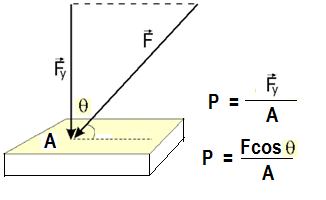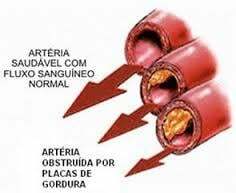The word pressure is spoken in our daily lives, but it can have different meanings. It can mean greatness physical which is what we are going to focus on in this article, but it can also mean: Embarrassing influence, which forces someone to do something (Michaelis Dictionary). In this sense, we can see the report made by SPORTV on athlete Verônica Hipólito, participant of the Rio-2016 Paralympics.
Lightweight, Verônica Hipólito doesn’t even think about crowds and pressure in Rio: “Indifferent”
see more
A new perspective: NASA releases 3D images of distant galaxies
Harvard professor believes he has found fragments of technology…
The sprinter, who will compete for four medals at the Paralympics, guarantees that he will not be
the presence of family and friends that will disturb you: “I will do my best”.
One of Brazil's top athletes at the Rio 2016 Paralympic Games starting on September 7, Veronica Hipolito carries more with him the easy smile on his face than the face of someone who lives pressed
Pressure as a physical quantity is defined as force per unit area.
P= F/A, the force that is acting on a surface has to be perpendicular to this surface. See illustration below.
Force F has an inclination of θ with the vertical and, therefore, its component in this direction Fy is given by Fy =F.cosθ, in this case, Fy is the force perpendicular to the surface (area A).

The physical quantity pressure has several units of measurement, but the one expressed in SI is N/m2 = Pa (1 Newton/square meter is equal to 1 Pascal).
| in SI | CGS | in MKS | Other units |
| n/m2 =Pa (pascal) | dyn/cm2 | Kgf/m2 | atm (atmosphere)mmHg (mm of mercury) |
How much pressure does a 70 kg person exert on the floor. Assume that the area of the soles of the feet is 150 cm2.
Resolution:
Assuming that the person's weight is divided equally between the two legs, then:
P=m.g =70 kg.10m/s2 =700N, on each foot there is a force of 350N and therefore the pressure of the feet on the floor is P= F/A, P= 350N/150×10-4m2
P= 2.33x104N/m2 = 2.33x104 Pa.
Let's see some types of pressure that are related to the physical quantity discussed above.
Every time we talk about pressure in the sense of physical magnitude, we have to remember that it is the ratio between a force and the measure of the area in which the force acts perpendicularly. A atmospheric pressure corresponds to the weight of the air on the bodies that are immersed in that fluid.
Evangelista Torricelli was the one who measured atmospheric pressure through an experiment in which he used mercury (Hg) in a vat and spilled a tube, too, with this metal inside this vat. The height of mercury that formed and that did not spill into the vat, he said, was because the air pressure over the vat did not leave the column of mercury to descend and defined this pressure as 1atm (One atmosphere) and which corresponds to the height in the tube which was 760 mmHg (760mm of Mercury). The experiment was done at sea level. The higher the altitude, the thinner the air, that is, less dense and lower the pressure.

When you have the opportunity to travel by plane, do the following: take a bottle of mineral water plastic bag that is empty and uncover it, still inside the plane on the ground, and with doors open, close it in then. When the plane is at cruising altitude (10,000m) you will see that the bottle is full, indicating that there has been some pressure variation.
In fact, the internal pressure of the plane has decreased and since the pressure inside the bottle has not changed, the bottle tends to bulge. Although the plane's cabin is pressurized to maintain the same pressure at the time of takeoff, it is always lower and therefore the internal pressure of the bottle is greater at this time. The opposite will happen if you start doing the experiment when the plane is at 10,000m.


Have you ever thought about the effect of atmospheric pressure when we drink a soft drink through a straw? When you suck the straw you are removing air from inside it causing the internal pressure to decrease, then the external atmospheric pressure on the surface of the refrigerant pushes the liquid into the straw.
Exercise/Example
How much is 1 atm pressure in the SI?
Solution:
Well, we know by definition that:

And that the weight of the mercury column is given by P=m.g, where the density is given by: d=m/v and, therefore, m=d.v.
But, the density of Hg= 13.6g/cm3 hence the calculation of the mass of mercury due to the column of height h is given by: m= d. (A.h), where A is the area of the base of the tube and h is the height of the cylinder and (Ah) corresponds to the volume.

So the pressure of the mercury column will be P= 13.6g/cm3. (10m/s2). (760 mm), which putting everything in the SI unit we have:
P=(13.6.10-3kg/10-6m3).(10m/s2). (760.10-3m) =
={ [13.6kg.(1̸0-6). 10m/s2].760m}/1̸0-6 m3=136(kg.m/s2).760̸m/m̸3=136N.(760/m2)
P=1.0336x105N/m2. So 1atm is approximately 1x105N/m2=1x105Pa.
The pressure in a fluid corresponds to the pressure it exerts on any body immersed in it. When we talk about fluid this can be air or any liquid. The pressure inside any fluid is given by: P=p0+ρgh, where p0 is the external pressure to the liquid, d is the density of the liquid, g the acceleration of gravity and h corresponds to the height to the surface.
Blood pressure is derived from contraction (systolic pressure) and relaxation (diastolic pressure) of the heart muscles. When the heart pumps blood, it gains speed inside the arteries causing pressure on them.
If there is a decrease in the internal diameter of the arteries due to atherosclerosis (accumulation of fat in the walls) there will be an increase in pressure, as the blood will decrease its flow in this region, which may compromise the arteries with disruption.

The normal pressure in the eyes is around 12mmHg to 21mmHg, when it increases it can reach up to 70mmHg and can impair vision and cause blindness. The individual who has high pressure in the eyes is called glaucoma. There are several types of glaucoma that cause intraocular pressure, mainly damaging the optic nerve and retina.

Nivio Bernardo
Master's Degree in Physics Teaching
let's study physics